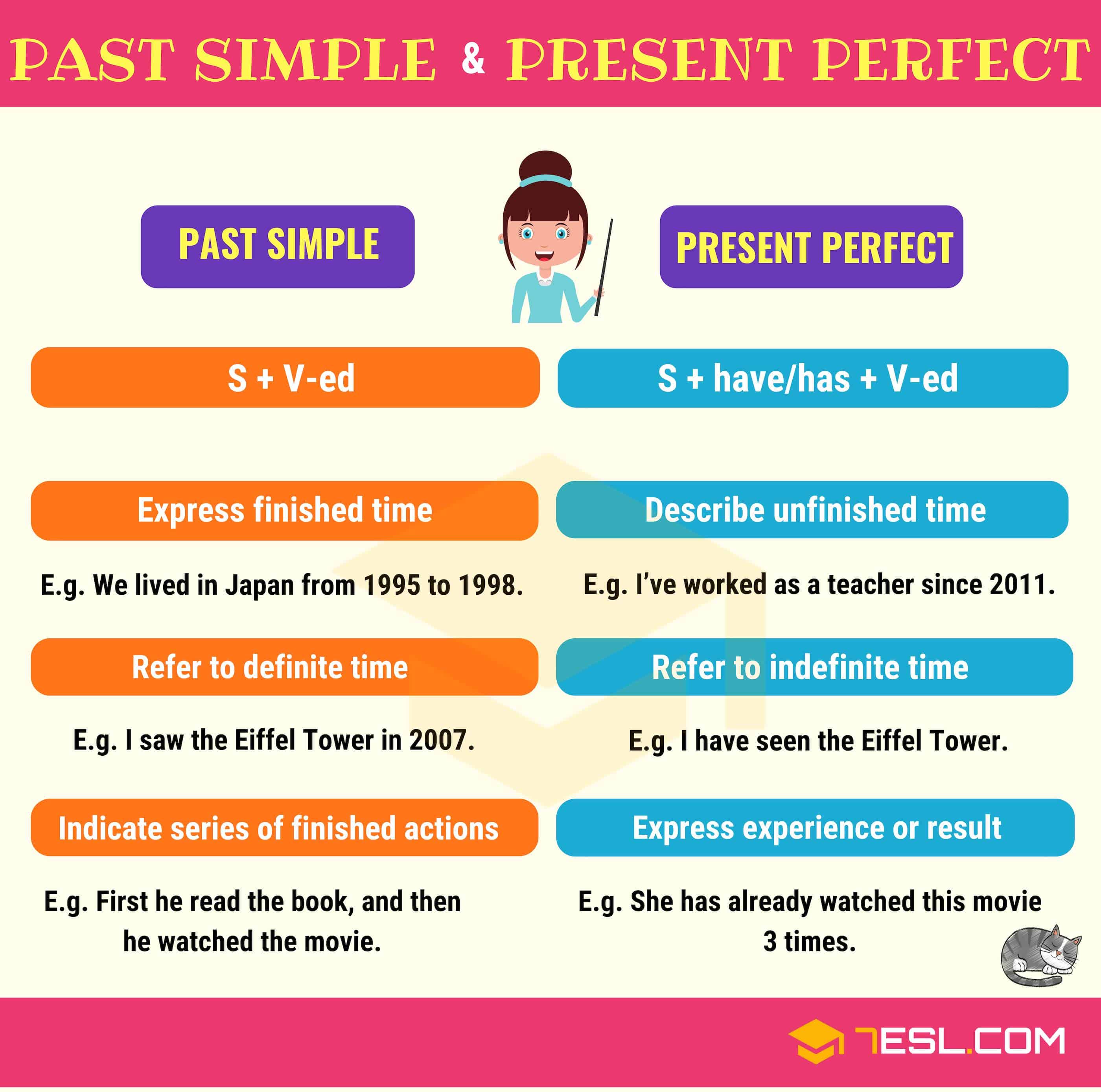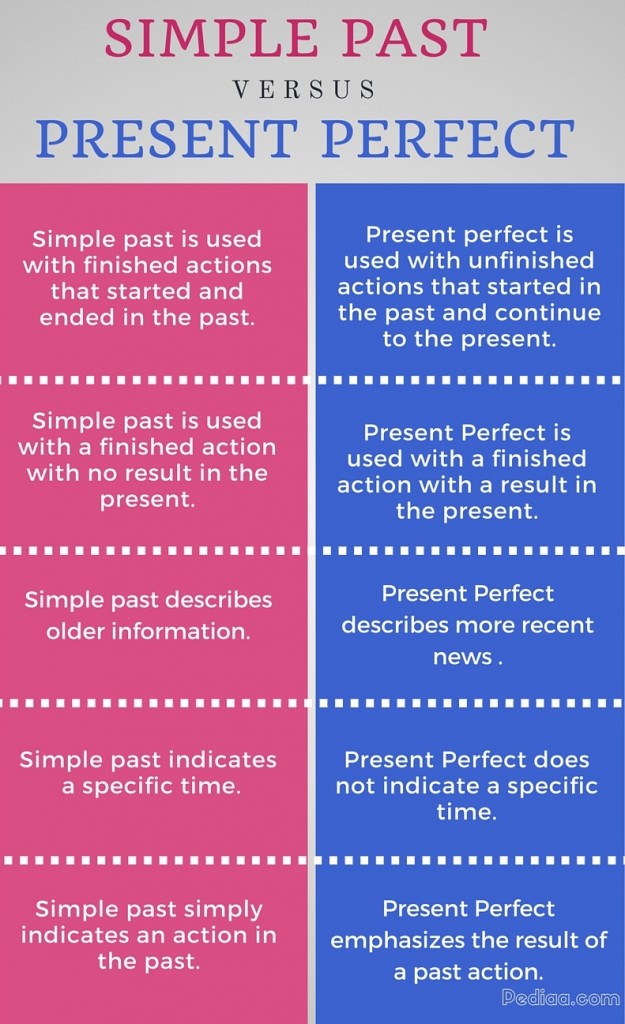Difference Between Past Simple And Present Perfect
We use the past simple for past events or actions which have no connection to the present We use the present perfect for actions which started in the past and are still happening now OR for finished actions which have a connection to the present Present Perfect vs. Past Simple: The Key Differences. Here’s a quick overview of the key differences between the present perfect tense and the past simple tense: We use the simple past to refer to an event/action that has already finished or happened, and the time is usually certain and specified. It always refers to finished time.

Past simple deals with completed actions or events in the past while present perfect is used to express past actions that have a connection to the present The choice of tense not only affects sentence structure but also shapes the meaning and interpretation of Simple past vs. present perfect. The simple past and the present perfect both refer to past actions, but are not interchangeable in English grammar. The simple past is used with a specific time marker for actions that started and finished in the past. The present perfect is used without a time marker for actions that began in the past, but .

Difference Between Past Simple And Present Perfect
The past simple tense indicates series of finished actions or repeated actions the present perfect tense expresses experience or result Examples First he read book and then he watched movie past simple He went to the cinema every weekend last year past simple Have you ever seen this movie present perfect Past or present perfect educa. Difference between present perfect and past perfect infographic Differences between present perfect tense and simple past tense .

English Tenses Past Simple And Present Perfect ESLBuzz Learning

Difference Between Simple Past And Present Perfect
Simple Past vs Present Perfect Simple English Grammar Cram Up Grammar Simple Past Present Perfect Simple Past Present Perfect Simple Form See also explanations on Simple Past and Present Perfect Simple Use In British English the use of Simple Past and Present Perfect is quite strict The simple past tense is used to describe completed actions in the past with a specific time reference, while the present perfect tense indicates actions that occurred at an unspecified time in the past, emphasizing the connection between the past and the present.
In British English we use the present perfect to talk about an action or situation in the past when we don t know the exact time or it isn t important I ve invited Dave and Sue for dinner We use the past simple to talk about a specific time in the past I Introduction. This section will help you to understand the differences between the Present Perfect Tense and the Simple Past Tense. Has the time period finished? Is it new information or old? Is it a specific time? Has the action finished (sentences with.